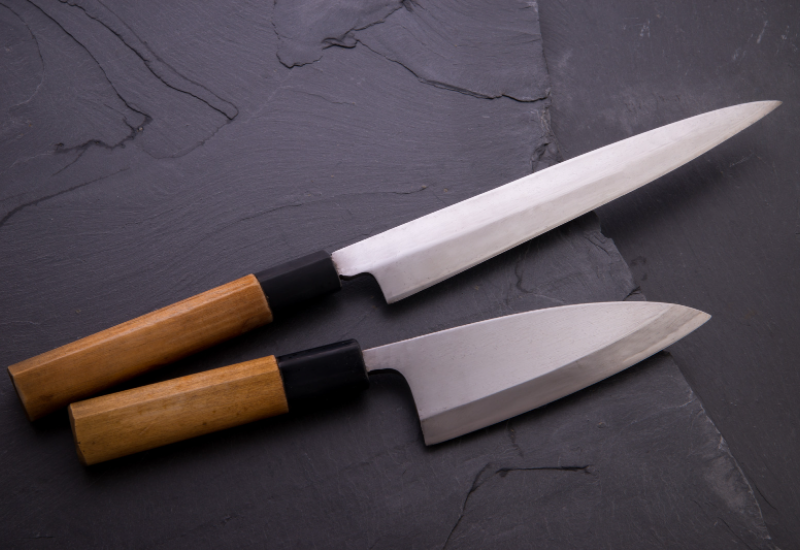Japanese food is loved worldwide by diners and gourmets for the delicate flavors coming from cooked Japanese rice mixed with vinegar, sugar, and salt – creating the perfect blend of subtleness, enough to form rice balls perfect for making sushi. Fresh, fine-quality ingredients like Salmon, prawn, squid, and other seafood freshly-picked from sea, on the contrary, provide exotic, savory tastes to each menu. The social media-friendly aesthetics that feature vivid-colored ingredients like glistering orange Caviar beads, ocean-green Wakame seaweed strips, and perfect alignment of fresh Sea bass slices spread on the traditional, Japanese-style plates are also what makes gourmets swoon and swore their loyalty to Japanese food.
As Japanese delicacies are often served in specialty restaurants called ‘Omakase’ restaurants, culinary experts and Japanese food professionals find it highly crucial to continuously search for high-end, top-notch Japanese knife brands that forge extraordinary knife models to help in the crafting of Ebi sushi, Maki rolls, and Sake sashimi. As Omakase restaurants are high-end, traditional Japanese restaurants that stand out for the signature dishes head chefs serve in their very own unique ways, diners and gourmets can enjoy all the Japanese food aesthetics, the Zen-styled interior, and the elegance of serving Japanese dishes to mark your dinner night an amazing dining experience.
With high expectations gourmets have when it comes to Japanese food, it is a must for professionals and culinary experts to master their knife skills of chopping, cutting, slicing, filleting, and layering various kinds of ingredients. Thus, a wise selection of Japanese knives is needed to successfully craft one-of-a-kind menus and dishes to be presented by proud, dedicated Japanese food chefs.
Selecting a Japanese Knife
Although it might sound like a challenge to choose the right Japanese knife to meet your specific needs in the kitchen, you can look at the following factors to ease your decision-making: function, steel hardness, sharpness, and knife edges. It is best to first choose your knife according to the function it serves – for example, go for a Gyuto knife if you need a multi-function or a multi-tasking knife in the kitchen but choose a Yanagiba knife if you want to make sashimi or sushi dishes instead. Although these two knife types are different in the function they serve and the features they own, Japanese knives are made out of hard steels.
It is best to look at high Rockwell hardness values to ensure that the knife is durable enough to cut or slice through various-textured materials or dense ingredients. Japanese knives are also made to be extremely sharp – they are forged with a general purpose of filleting and slicing through numerous ingredient types. It is best to choose new, razor-sharp blades out of the box for the best cooking experience.
Japanese knives are as well available as single edge knives and double edge ones. Single edge knives are generally sharper – only on one side of the blade is sharpened, while the other side of the blade is slightly concaved. For delicate and sensitive culinary work, single edge knives are highly recommended. A double edge knife, on the other hand, works well with users who are both left-handed and right-handed. A double edge knife can work with all kinds of processes in the kitchen and its sturdy blade body allows users to confidentially utilize and grip onto the blade without worries. However, when compared to single edge ones, this double edge knife may work a little less neatly and re-sharpening the blade can be a little tougher compared to those of single edge knives.
Now, choosing a great pair of Japanese knives is no longer a challenge if you understand a few tips to wisely select one of your own. To possess a Japanese knife and keep it safe in the kitchen, remember to clean your knife right away after use and keep them dry.

